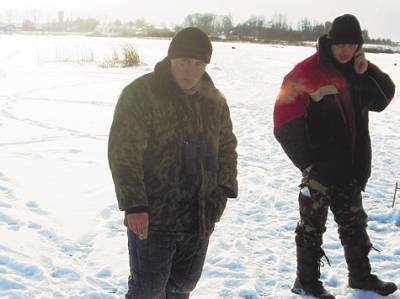
When the reservoir bellevie reigns, and even the most promising places are silent, should approach fishing differently, otherwise. Try to look for pike in the shallows — the result will not keep itself waiting long!
The hunt for the predator using zherlits exciting and very emotional. Wrong those who say that this fishing is for the lazy, it is nothing interesting in itself does not carry. Experienced sukari know that any garlicka fishing is like a chess game — each of your step depends on the success of the fishing. It is for this reason to sit in one place, patiently waiting for a bite — so deliberately to doom yourself to failure. One should not be lazy, to experiment and come up with unconventional solutions, which sometimes give amazing results!
Take, for example, fishing. Almost everywhere you hear the same information — “pike should be sought in the deep places, near the wintering holes, along the boundary of the flooded riverbed”. No doubt, to find the fish there will not be any work. But what to do when you get to the pond first, where those pits with direction — don’t know?
To put imitation fish at random — a tactic which is unlikely to bring success. Instead, it is much better to pay attention on the coastal zone of the reservoir. As a rule, it is everywhere abundantly overgrown with reeds, reeds and other vegetation which provides the perfect hiding place for pike. And do not fear the depths! Very often in such places from the lower edge of the ice to the bottom a little more than 30 centimeters of water, but it is in such places the catching of a pike most likely.
To choose the place for installation should zherlits eye — reeds, reeds and other vegetation indicate good fishing places. It is close to them and should be fishing. The wells are located at a distance of 10-15 meters from one another. Experienced anglers know that if a pike is in the vicinity of the wells, the chances for a strike within the first 10-15 minutes sharply. Examples where the Fisher does not have time to put all tackle, as he sees the first strike, a great multitude, so the task of the angler — not to frighten off near the hole is the predator. Need to move gently, and the wells — not only should not “pump”, but even and clean away sludge: in order to “light up” the place, the angler makes ice tiny little hole with the handle of a slotted spoon, enough to skip the bait.
The tactics of fishing is searching for an active, configured to feed the predator. After all the tackles set, the angler can withstand hour-long pause — this time is enough active predator nearby, found our bait. If the bite did not happen, the angler begins moving gear first, usually extreme tackle endure to the end, away from everyone, keeping a safe distance of 10-15 meters. After 30-40 minutes, the transfer for the next tackle. Thus, for light day the angler has the opportunity to fish in 200 to 250-meter section of the reservoir.
The opinions of fishermen about what to do if a bite occurred and was caught by the predator, were divided into two opposing camps. Some believe that the rate of movement cannot be reduced, regardless of caught the predator or not, should continue to permutation zherlits. Others believe that the place of capture should the predator fish as carefully as possible, citing the example of his position the so-called “pike party meeting” when one of the wells for a short period of time managed to catch a few pike.
What to do in this situation is to solve the angler. If the visibility is observed active pike bite, and anglers here and there running around to “check boxes”, it makes sense to leave this gear in the same place — actively moving the predator will find the bait fast enough. If bites are not observed, but the fishermen are bored, leave the tackle in the place of capture there is no sense — caught pike can be the only active fish in the area, and instead of waiting it is better to concentrate on finding the fish.
Plays an important role and adjusts the depth at the snap of a fishery. Having tried a large number of different variants, anglers came to the conclusion that the optimum would be to install a live bait in the vicinity of the lower boundary of the ice. It is connected not only with a shallow depth in a catching place, but also with the structural features of magic eyes — the best thing the predator sees around him, as well as those things that are above it.








